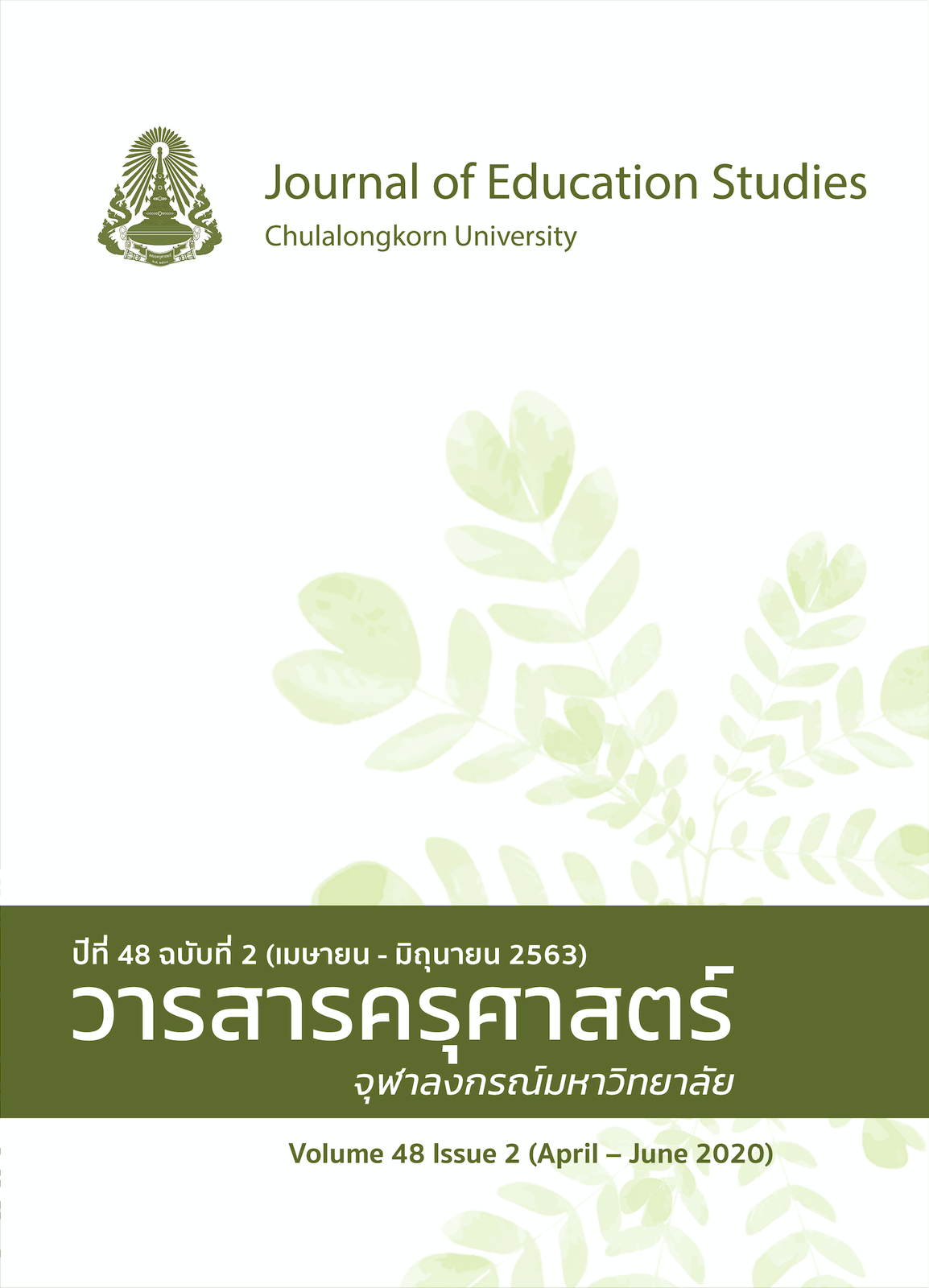The Development of a Visual Literacy Ability Test for Undergraduate Students
Keywords:
test, visual literacy, 21st century skillsAbstract
The objectives of research were 1) to study the components of the Visual Literacy Ability test (VLA); 2) to develop the VLA for undergraduate students; and 3) to construct a norm for the VLA. The research sample, selected using a stratified multi-stage cluster sampling, was 960 undergraduate students in total.
The research tool was the Visual Literacy Ability test. The research results showed that: 1) There are seven VLA components, as follows; i) Determine the extent of the visual materials needed ii) Find and access needed images iii) Interpret and analyze the meanings of images iv) Evaluate images and their sources v) Use images vi) Design and create meaningful images, and vii) Understand many of the ethical issues surrounding the creation and use of images, as well as access and use visual materials ethically. 2) The VLA test comprises a multiple-choice objective test, 35 items in total, and 2 items of gap-filling objective test. The IOC value of the VLA test ranged between 0.7-1.00 3) The norm of the VLA of undergraduate students in Thailand was found to be in normal-t value, from 36.58 to 71.67.
References
Ausburn, L. J., & Ausburn, F. B. (1978). Visual literacy: Background, theory and practice. Programmed Learning and Educational Technology, 15(4), 291-297.
Avgerinou, M. D. (2009). Re-viewing visual literacy in the" bain d'images" era. TechTrends, 53(2), 28.
Beldarrain, Y. (2006). Distance education trends: Integrating new technologies to foster student interaction and collaboration. Distance education, 27(2), 139-153.
Bleed, R. (2005). Visual literacy in higher education. Educause Learning Initiative.
Bootkaew, S. (2013). Development of thought pattern in designing for visual communication [Unpublished Doctoral Dissertation]. King Mongkut's University of Technology North Bangkok.
Brumberger, E. (2011). Visual literacy and the digital native: An examination of the millennial learner. Journal of Visual Literacy, 30(1), 19-48.
Considine, D., Horton, J., & Moorman, G. (2009). Teaching and reaching the millennial generation through media literacy. Journal of Adolescent & Adult Literacy, 52(6), 471-481.
Dallimore, E. J., Hertenstein, J. H., & Platt, M. B. (2010). Class participation in accounting courses: factors that affect student comfort and learning. Issues in Accounting Education, 25(4), 613-629.
Debes, J., & Williams, C. (1969). What is ‘visual literacy?’. International Visual Literacy Association.
Endoo, S. (2011). The production of multimedia lesson on basic of visual communication design for lower vocational students [Unpublished Master’s Thesis]. Khon Kaen University.
Hattwig, D., Burgess, J., Bussert, K., & Medaille, A. (2011). Visual literacy competency standards for higher education. Association of College & Research Libraries.
Heinich, R., Molenda, M., & Russell, J. D. (1989). Instructional media and the new technologies of instruction. Macmillan.
Johansson, V. (2012). A time and place for everything?: Social visualisation tools and critical literacies. The Swedish School of Library and Information Science: The University of Borås.
Kongmalai, B., & Areesophonpichet, S. (2015). The development of knowledge management competencies for higher education students in the 21st century. Journal of Education Studies, 43(1), 37-47.
Kovalik, C., & King, M. E. (1998). Visual literacy. A web site tutorial on visual literacy. http://www.educ.kent.edu/community/VLO
Lemke, C., Coughlin, E., Thadani, V., & Martin, C. (2003). enGauge 21st century skills—Literacy in the digital age. http://pict.sdsu.edu/engauge21st.pdf
Lundy, A. D., & Stephens, A. E. (2015). Beyond the literal: Teaching visual literacy in the 21st century classroom. Procedia-Social and Behavioral Sciences, 174, 1057-1060.
Mayer, R. E. (2009). Multimedia learning. Cambridge University.
Oblinger, D., Oblinger, J. L., & Lippincott, J. K. (2005). Educating the net generation. EDUCAUSE.
Pewporchai, N. (2011). Development of a model of tailor-made training modules for enhancing information literacy for undergraduate students. Journal of Education Studies, 38(2), 68-84.
Phuttasorn, E. (2014). Trends in enhancement of 21st century learning skills for adult learners. An Online Journal of Education, 9(4), 93-106.
Price, M. C. (2009). What kind of mental images are spatial forms?. Cognitive Processing, 10, 276-278.
Roehling, P. V., & Brown, T. S. (2011). Differential use and benefits of PowerPoint in upper level versus lower level courses. Technology, Pedagogy and Education, 20(1), 113-124.
Schultheiss, O. C., Yankova, D., Dirlikov, B., & Schad, D. J. (2009). Are implicit and explicit motive measures statistically independent? A fair and balanced test using the Picture Story Exercise and a cue-and response-matched questionnaire measure. Journal of Personality Assessment, 91(1), 72-81.
Thanomsak, J. (2010). The construction of interactive online learning for the principles of typeface design [Unpublished Master’s Thesis]. King Mongkut's University of Technology Thonburi.
Thitiraskrit, P. (2009). Web-based instruction on visual literacy [Unpublished Master’s Thesis]. King Mongkut's University of Technology Ladkrabang.
Wileman, R. E. (1993). Visual communicating. Educational Technology.




